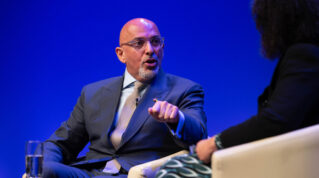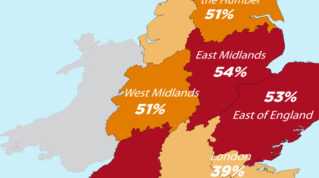Many column inches have been dedicated of late to what might be in the imminent schools white paper. In particular, these are concerned with the secretary of state’s vision of all schools being within a strong multi-academy trust. But there’s been little on how we get to that vision, and even less from the viewpoint of those making the decisions to join a MAT.
The National Governance Association’s membership includes trusts of all shapes and sizes. We talk to trustees on a daily basis and provide services for those governing academies (SATs or MATs) and maintained schools. So we know the experience from every angle and we take care to listen.
The feedback we receive all points in the same direction. First, there is a huge attachment across the piece to locality and the importance of local collaboration. And relatedly, there is a generalised fear of being ‘taken over’ by a large organisation that does not have the interests of ‘their’ school and their community at the heart of their decision making in the way the current board has.
We can debate what constitutes a large MAT (and in fact we’ve been frustrated over the past few years at the lack of appetite within the sector to have this debate). But while all efforts to date to find the optimum size of trust have floundered, the response to the imminent policy document raises a slightly different argument about participation, connectedness, understanding of community, risk and in effect who ‘owns’ our state schools. These are principles that surely should be at the heart of a vision for England’s schools.
Third, and perhaps most pertinently among the feedback we’ve gathered, governing boards have found a lack of persuasive evidence for the benefits to pupils of joining a MAT. And this includes from MATs with whom they’d had exploratory conversations – sometimes even extensive negotiations!
There is a huge attachment to locality
Of course, these three main factors are nuanced and overlapping, and the strength of feeling differs from place to place and school to school according to their history and relationships. Given competing pressures, together they lead to boards and leaders unwilling to prioritise the work of joining a MAT.
The views of headteachers usually carry a lot of weight with boards. The change of leadership positions, especially to heads of school, can be substantive and for some unappealing, especially experienced headteachers joining an existing MAT now, with very little scope to shape it.
NGA was an early adopter of the benefits of families of schools. In 2015, with ASCL and Browne Jacobson, we published the first edition of guidance on forming or joining a group of schools. We presented it at the Houses of Parliament with a response from then-minister, Lord Nash. Its title, Staying in control of your school’s destiny, resonated across the sector.
And that is why the issue of size of trust is still deeply relevant. Boards that have carefully crafted groups of schools to come together or painstakingly negotiated with a local small or middle-sized trust made it very clear they didn’t want to see those trusts completely outgrowing their locality or being subsumed into a much larger trust within just a few years.
We’ve been sharing our intelligence with the Department for Education and were thrilled last week to see them going public with their intention to strengthen governance at local level within MATs. Without doubt, this is the right move. Of course the board of trustees remains the MAT’s decision-making body, so on its own this won’t persuade everyone.
To have a chance of achieving his vision, the secretary of state also needs to assure those governors and SAT trustees of two things: that his vision is not to create huge trusts but by 2030 to have more middle-sized trusts (preferably defined by the number of pupils they educate and with an emphasis on geography); and that there will be a mechanism for ensuring MATs are held to account for promises made during a negotiation.
We have suggested a number of routes. We await the outcomes like everyone else – with bated breath.
















Your thoughts